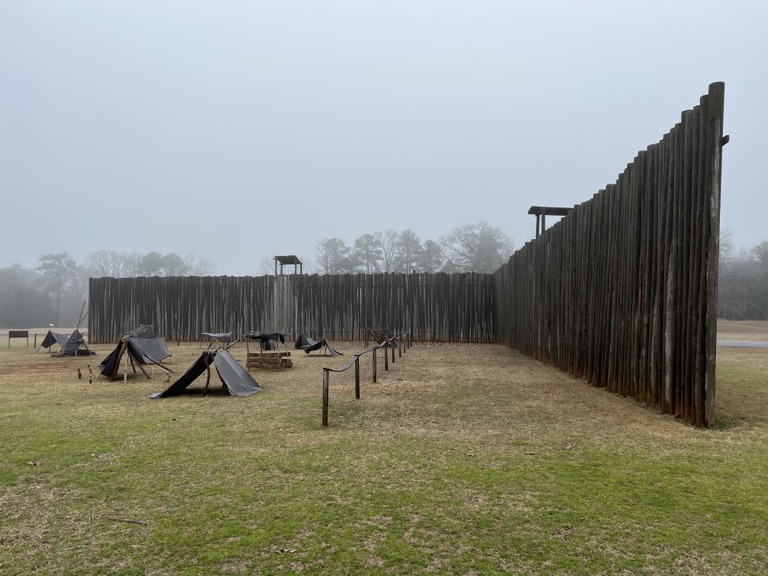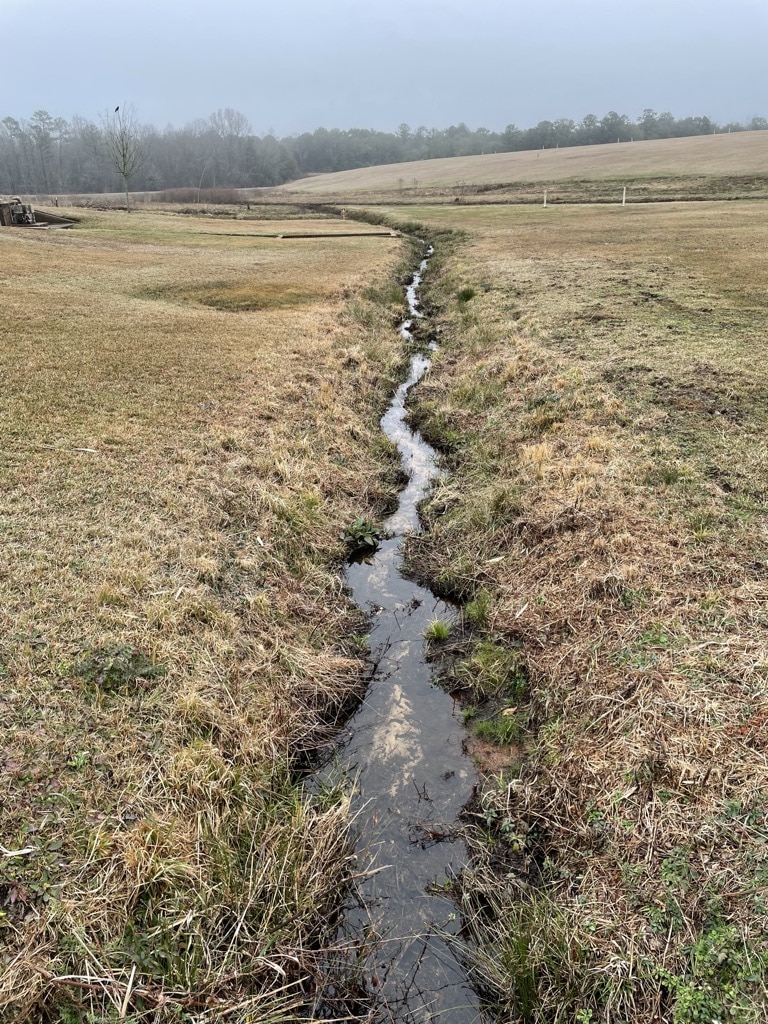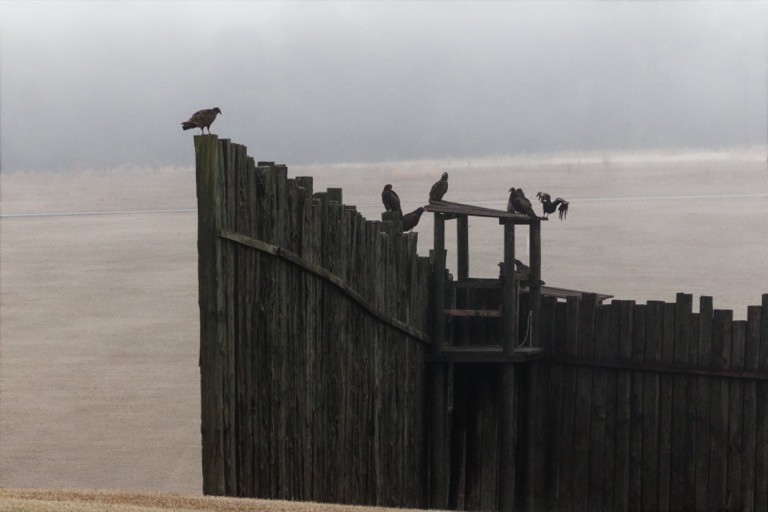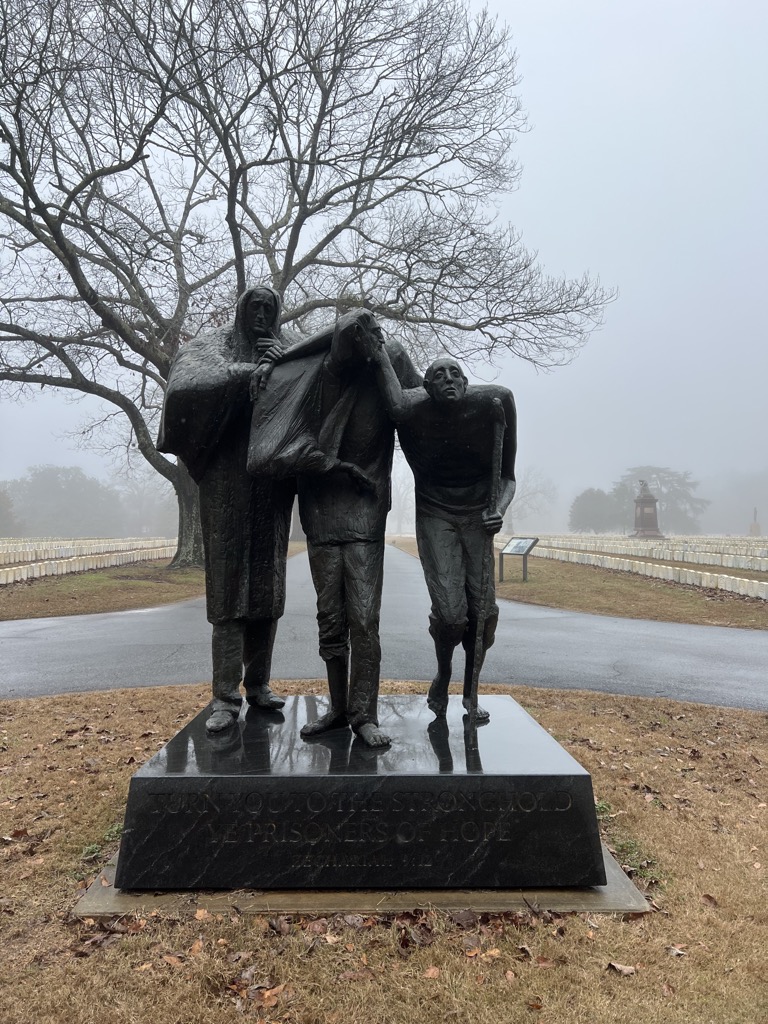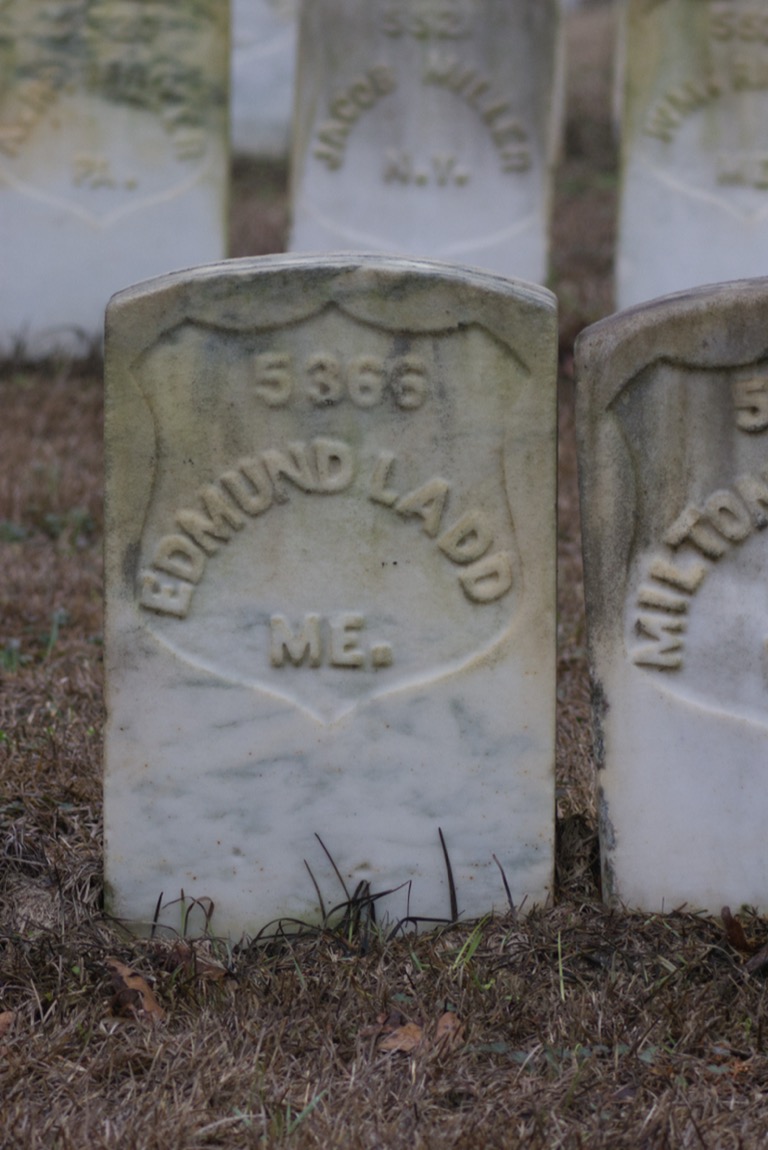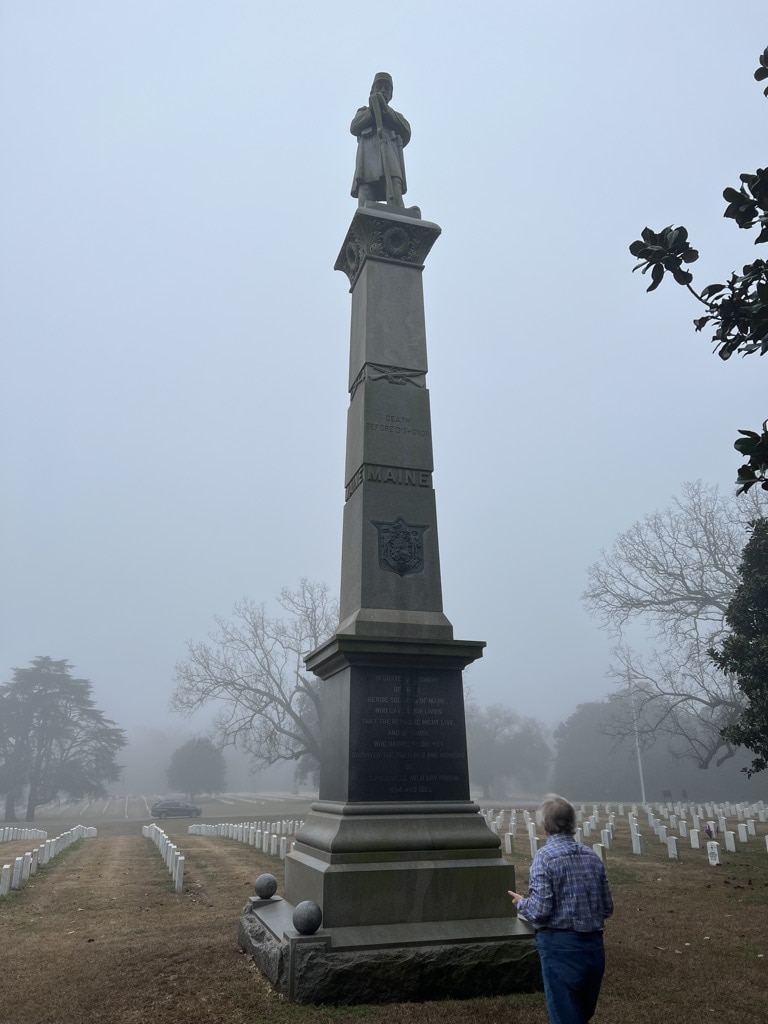on
Andersonville Civil War Prison
Andersonville, GA is the site of a confederate prison in the Civil war. It now includes the National Prisoner of War Museum. It was misty and foggy the day we visited.
The prison was opened in 1864 as Camp Sumter, after the Union and Confederacy stopped swapping prisoners. Early in the war, they would often swap prisoners, sometimes as soon as right after the battle.
The prison was built by slaves, and consisted of a stockade with 17 foot high walls around 16 1/2 acres. There is a stream that went through the prison to provide drinking water for the prisoners. It was intended for 6000 men, but held 33,000 at its height after an expansion in 1865.
The area between the rail and the stockade wall was the death zone. Guards in the towers would shoot anyone in that area. The prisoners were not provided with any shelter, they used what they brought with them or could scrounge in the prison camp, such as small branches left inside.
There was a small stream that went through the prison, that was the water source for the prisoners. The side where the stream exited the prison was the toilet. The stream contained enough water for the original design capacity of 6000 men, but not for the expanded prison of 33,000 men. The prisoners dug wells into the hillside above the stream hoping to get cleaner water. A lightening strike in 1865 on that hillside above the stream supposedly created Providence Spring in the death zone between the rail and the stockade which was a much improved water source, and likely saved many prisoners from dehydration. The prisoners were allowed to make a trench to bring the water inside the rail.
The stream today is much smaller than in 1864.
The turkey vultures were hanging out at the re-created main gate area. I wonder if they did that when the prison was in use?
Nearly 13,000 soldiers died there, due to malnourishment and disease. These problems weren’t unique to the Southern prisons. The prisoners were buried in a cemetery a little way from the prison. This cemetery is now a National Cemetery that any veteran can be buried in.
Donna has an ancestor, Edmund Ladd, that died at Camp Sumter and is buried in the cemetery there. Because of the high death rates, the prisoners were buried in trenches shoulder to shoulder. The graves were only numbered. After the war was over, one of the Union soldiers, Dorrance Atwater, who kept a list of the deaths worked with Clara Barton and the Army to identify the grave sites and place headstones on each.
Many states that had soldiers at Andersonville have erected monuments in the cemetery. Veterans from other wars are also buried in the cemetery.
Some birds seen at the site.
